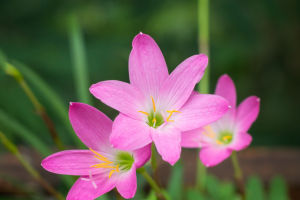World of Cactus
Hey Lykkers! The cactus, with its unique shapes and spiky exterior, is more than just a plant—it’s a symbol of survival. Found in some of the harshest environments on Earth, cacti are a wonder of the plant kingdom, adapted to thrive in conditions that would wither most other plants.
From the towering saguaro to the tiny pincushion cactus, these resilient plants have captured the imagination of gardeners, scientists, and nature lovers alike.
What Makes a Cactus a Cactus?
Cacti belong to the plant family Cactaceae, which includes over 1,750 species. They are native primarily to the Americas, from Patagonia in the south to parts of Canada in the north. The distinguishing feature of cacti is their succulent nature—meaning they store water in their thick, fleshy tissues to survive long periods of drought. But there’s much more to cacti than just their ability to store water.
1. Spines instead of leaves: most cacti have spines instead of traditional leaves. These spines serve multiple purposes—they help reduce water loss by limiting the surface area, protect the cactus from herbivores, and even provide some shade, helping to keep the plant cool.
2. Photosynthesis in the stem: unlike most plants that use their leaves for photosynthesis, cacti use their stems. This adaptation, known as CAM (Crassulacean Acid Metabolism) photosynthesis, allows them to open their stomata (tiny pores for gas exchange) at night when it’s cooler, reducing water loss.
3. Thick, waxy skin: the skin of a cactus is often covered with a thick, waxy coating, known as a cuticle, which helps prevent water loss and provides additional protection against intense sunlight.
Diverse Species of Cacti
Cacti come in many shapes and sizes, from small and round to tall and columnar. Here are some of the most notable types:
1. Saguaro (Carnegiea gigantea): the iconic saguaro is native to the Sonoran Desert in Arizona and Mexico. It can grow up to 40 feet tall and live for over 150 years. Saguaros are famous for their towering stature and distinctive arms, which can take decades to develop.
2. Prickly Pear (Opuntia): known for their flat, pad-like stems (called cladodes), prickly pear cacti are found throughout the Americas. They produce edible fruits, known as “tunas,” and the pads themselves can be cooked and eaten as “nopales.”
3. Barrel Cactus (Ferocactus): shaped like a barrel, this cactus has thick, ribbed stems and is often covered with fierce spines. It is commonly found in the deserts of the southwestern United States and Mexico.
4. Peyote (Lophophora williamsii): this small, spineless cactus is known for its psychoactive properties, traditionally used in Native American spiritual ceremonies. It grows in the deserts of Texas and Mexico and is highly protected due to its cultural significance and overharvesting.
5. Christmas-Cactus (Schlumbergera): a popular houseplant, the Christmas-cactus is native to the coastal mountains of Brazil. Unlike their desert-dwelling relatives, these cacti thrive in humid, forested environments and produce beautiful, colorful flowers around the holiday season.
Remarkable Adaptations for Survival
Cacti have evolved a number of remarkable adaptations to help them survive in extreme conditions:
1. Water storage: cacti are masters at storing water. Their thick, fleshy stems can absorb large amounts of water during rare rains and store it for use during long dry spells.
2. Shallow, wide root systems: cacti often have shallow root systems that spread wide, allowing them to quickly absorb moisture from light rains. Some cacti can develop deeper roots to tap into underground water sources.
AMAZING Cacti and Succulents (World's Most Spectacular Plants episode 11 of 14)
Video By Redfern Natural History Productions
Uses of Cacti
Cacti have been utilized by humans for thousands of years for various purposes:
1. Food: many species of cactus, like the prickly pear, produce edible fruits and pads. The fruit can be eaten raw or made into jellies, candies, and drinks, while the pads can be grilled, boiled, or added to salads.
2. Medicine: certain cacti have been used in traditional medicine for their healing properties. For example, prickly pear has been used to treat diabetes and digestive issues, while the peyote cactus has been used for its psychoactive effects in spiritual practices.
3. Decoration: cacti are popular ornamental plants due to their unique appearance, low maintenance requirements, and resilience. From small indoor varieties like the bunny ear cactus to large outdoor types like the organ pipe cactus, they add a touch of the exotic to gardens and homes.
The Role of Cacti in Their Ecosystems
Cacti play a crucial role in their ecosystems. They provide food and shelter for various animals, from insects and birds to larger mammals. The saguaro cactus, for example, serves as a nesting site for many birds, such as the Gila woodpecker and the elf owl. Additionally, their flowers attract pollinators like bees and bats, ensuring the continuation of the species.
Growing Cacti at Home
If you're intrigued by these remarkable plants, growing a cactus at home can be a rewarding experience. Cacti require minimal care, making them perfect for those new to gardening:
1. Light: most cacti prefer bright, direct sunlight. Place them in a sunny window or outdoors where they can receive plenty of light.
2. Soil: use well-draining soil, such as a cactus or succulent mix. Good drainage is essential to prevent root rot.
3. Water: water sparingly, allowing the soil to dry out completely between waterings. Overwatering is the most common mistake in cactus care.
Cacti are a testament to nature's ability to adapt and thrive in the most challenging environments. Their unique appearance, fascinating adaptations, and resilience make them a favorite among plant enthusiasts and a crucial component of their ecosystems. Whether you're looking to grow one on your windowsill or learn more about their role in the wild, cacti offer endless opportunities for exploration and appreciation.


